Inline skates are perfect for smooth pavement and urban adventures, while strap-on skates like Snowfeet* are designed for snowy terrain. Here’s the gist:
- Comfort: Inline skates use rigid, fixed boots that may not fit everyone well. Strap-on skates let you use your own winter boots, offering a snug, familiar fit.
- Control: Inline skates excel on smooth, hard surfaces. Strap-on skates shine on snow, offering better handling on uneven or soft terrain.
- Safety: Falling on pavement with inline skates can hurt - protective gear is essential. Snow provides a softer landing for strap-on skates, reducing the risk of injury.
- Portability: Inline skates are bulkier, while strap-on skates are compact and easy to carry in a backpack.
Quick Comparison
| Feature | Inline Skates | Strap-On Skates (Snowfeet*) |
|---|---|---|
| Surface | Pavement, smooth trails | Snow, hiking trails, gentle slopes |
| Boot Fit | Built-in, rigid boots | Uses your own winter boots |
| Weight | Heavier | Lightweight |
| Safety | High fall impact on pavement | Softer landings on snow |
| Learning Curve | Moderate | Easier to pick up |
| Cost | $100–$400 | Starting at $250 |
If you love skating through parks or city streets, go for inline skates. But if you’re ready to glide through snowy landscapes without bulky gear, strap-on skates are your new best friend.
What Are Inline Skates?
Inline skates are designed with a single row of wheels lined up under a boot. Unlike quad skates, which have two wheels in front and two in the back, inline skates typically feature three to five wheels in a straight line. This setup gives them a smooth, gliding motion that feels a lot like ice skating.
The boots are usually made from hard plastic or composite materials and are padded inside for comfort. Most skates use a combination of laces, buckles, and Velcro straps to keep your feet secure. The wheels are mounted on a frame - commonly made of aluminum or reinforced plastic - which is attached directly to the boot.
What makes inline skates stand out is their focus on paved surfaces. They’re designed for smooth, hard terrain, offering better speed and maneuverability than traditional quad skates. Because of this, they’re a favorite for recreational skating and fitness activities.
Key Features of Inline Skates
The wheels are the heart of any inline skate. Recreational skates usually have wheels between 76 mm and 90 mm in diameter. Fitness or speed skates, on the other hand, can go up to 125 mm. Larger wheels give you more speed and handle bumps better, while smaller wheels offer more control and are easier to maneuver.
Most inline skates come with a heel brake, typically attached to the right skate. To use it, you just lift your toes and lean back to engage the brake. However, experienced skaters often choose models without a built-in brake, instead using advanced techniques like the T-stop or powerslide to slow down.
The bearings inside the wheels also affect your ride. Many skates use ABEC-rated bearings, with ABEC-7 being a common choice for recreational skates. These bearings strike a good balance between smoothness and cost. The frame material also matters - aluminum frames are stiffer and help transfer energy more efficiently, while composite or plastic frames are lighter and may feel more forgiving.
Where to Use Inline Skates
Inline skates are at their best on smooth, paved surfaces like bike paths, boardwalks, or tennis courts. Plenty of cities have dedicated skating trails - great examples include Central Park in New York City, the Chicago Lakefront Trail, and the Virginia Creeper Trail. These trails offer miles of safe, car-free routes perfect for skating.
Urban areas also provide opportunities for specialized inline skates designed for tricks or navigating city streets. And for beginners, indoor roller rinks are a great place to practice in a controlled environment, whether you’re working on basic skills or building speed and endurance.
While some inline skate models can handle rougher outdoor conditions like asphalt or uneven city streets, they’re still best suited for smooth, hard surfaces. For winter fun, strap-on skates like Snowfeet* offer a unique way to skate on snowy terrain, adding a whole new dimension to the skating experience.
What Are Strap-On Skates?
Strap-on skates are a fresh take on winter sports gear. Instead of being built into a dedicated boot like inline skates, these nifty little devices attach directly to your winter boots or shoes. Think of them as mini skis that strap onto your feet, letting you glide across snowy landscapes without the hassle of lugging around bulky, specialized equipment.
The idea is simple and practical. Designed specifically for snow, they turn any snowy surface into your personal skating rink. This makes them perfect for spur-of-the-moment winter fun - no need for a fancy facility or waiting for ideal weather conditions.
What’s great is how portable they are. Unlike heavy ski or snowboard gear, strap-on skates are compact enough to fit in your backpack. Whether you’re heading to a remote trail, exploring snowy spots, or just stepping outside for some fun, these skates are ready to roll - or rather, glide. Let’s dive into how they work and what makes them stand out.
How Strap-On Skates Work
The mechanics are refreshingly simple. Strap-on skates come with adjustable bindings that secure snugly around your winter boots. No need for specialized ski boots or fretting over sizes - if your boots fit comfortably, you’re good to go.
Each skate is like a mini ski, typically ranging from 15 to 39 inches in length. This compact size makes them easier to control and quicker to learn than traditional skis. They’re designed to glide smoothly over snow while offering the kind of maneuverability you just can’t get with inline skates on snowy terrain.
These skates shine on packed snow, groomed trails, or gentle slopes. They can handle fresh powder reasonably well, though deep snow might slow you down a bit. Unlike inline skates, which require smooth surfaces, strap-on skates embrace the uneven, natural beauty of snowy terrain.
Snowfeet* Strap-On Skate Features
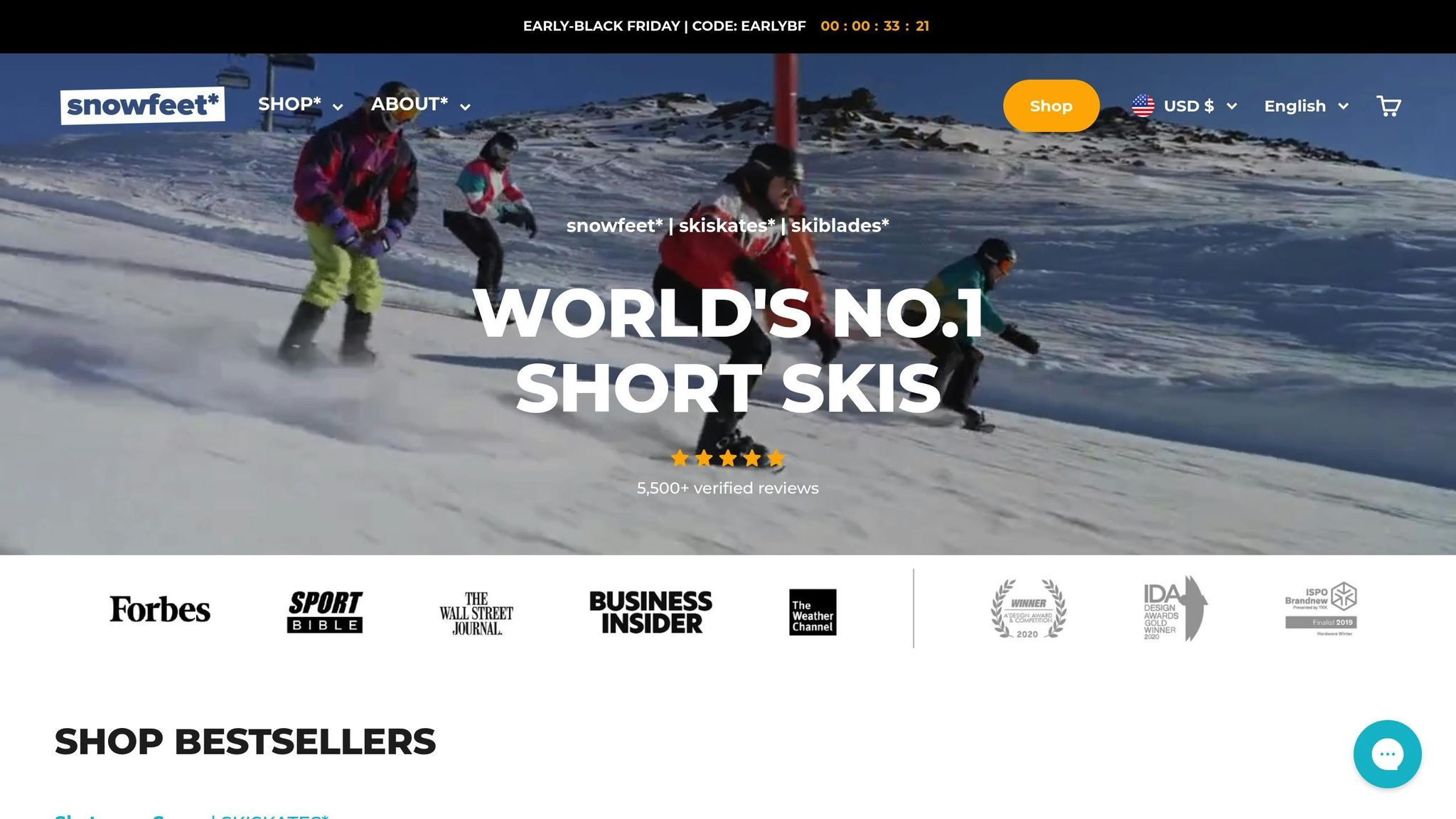
Snowfeet* takes the strap-on skate concept up a notch with designs that cater to both beginners and seasoned winter adventurers. Their Mini Ski Skates are just 15 inches (38 cm) long and lightweight enough to toss into most backpacks. Try doing that with a pair of skis or a snowboard!
For those wanting a bit more performance, the Snowfeet* PRO model measures 20 inches (50 cm). It’s still portable but offers a sturdier build and adjustable bindings that fit a wide range of boot sizes. Plus, they’re more comfortable than traditional inline skate boots. And hey, they come in multiple colors, so you can hit the slopes in style.
One of the best parts? These skates are easy to learn. Their shorter length keeps you closer to the ground, giving you better control and more stability than long skis - perfect for beginners who might find traditional skiing a bit daunting.
Price-wise, they’re a steal. The Mini Ski Skates start at $250, which is way less than the $800 to $1,500 you’d spend on a full ski or snowboard setup (not to mention the extra cost of ski boots and bindings). Snowfeet* skates work with the boots you already own, making them a budget-friendly way to enjoy winter sports.
For advanced users, Snowfeet* also offers longer models like the 99 cm POWDER skates, which are designed for deeper snow. These models strike a balance between the portability of mini skates and the performance of traditional skis, giving experienced riders even more options - all while keeping things fun and manageable.
Comfort Comparison: Inline vs. Strap‑On Skates
Comparing the comfort of inline skates to strap-on skates is a bit like comparing stiff hiking boots to your favorite sneakers. Both get the job done, but one feels a whole lot better. Let’s break down how each design affects your comfort on the snow.
Inline Skate Comfort
Inline skates come with built-in boots that provide solid ankle support, but they’re not exactly known for being cozy. They often create pressure points, especially if you’re skating for a long time. If you have wider feet, high arches, or other unique foot shapes, the rigid design can feel even more restrictive. Plus, inline skates usually need a few sessions to break in, and their heavier build can leave you feeling worn out after extended use.
Strap-On Skate Comfort
This is where Snowfeet* strap-on skates really shine. Instead of being stuck with a fixed boot, you can use your own winter boots - the ones you already know and love. That means you get all the cushioning, fit, and support you’re used to right from the start. The adjustable binding system lets you tweak the fit during your session, so everything stays snug and comfortable.
Snowfeet* even highlights this in their FAQ:
"The Pro X bindings are the best model, very durable, robust, comfortable on your feet and easily adjustable to fit any boot perfectly."
One user summed it up perfectly:
"I love how easy it is to put snowboard boots on and walk with them, they don't hurt like ski boots, and I feel more flexible during the ride."
On top of that, Snowfeet* skates are super lightweight, which means less fatigue and more fun.
Comfort Comparison Chart
| Feature | Inline Skates | Snowfeet* Strap-On Skates |
|---|---|---|
| Boot Fit | Fixed boot design | Uses your familiar winter boots |
| Break-In Period | Requires multiple sessions | Ready to use immediately |
| Weight | Heavier due to integrated design | Ultra-light, reducing fatigue |
| Adjustability | Limited to static lacing | Fully adjustable bindings |
| Pressure Points | Common with rigid construction | Minimal, thanks to your chosen boots |
| Walking Comfort | Awkward off-skate | Natural walking comfort |
| Foot Freedom | Restricted by fixed boot shape | Follows your foot’s natural movement |
It’s clear that Snowfeet* strap-on skates take the lead in comfort. By letting you stick with your go-to boots, they avoid the common pain points of inline skates, so you can focus on having a blast out there.
Control and Handling: Which Skates Perform Better?
Now that we've covered comfort, let's dive into how these skates handle challenging winter terrains. Inline skates shine on smooth surfaces, but strap-on skates are built to tackle the unpredictable nature of winter conditions.
Inline Skate Control
Inline skates are great for precision on smooth, even surfaces. They allow for sharp turns and controlled stops - perfect for a clean stretch of pavement. But when you take them onto snowy or uneven terrain, things get tricky. Snow buildup and surface changes can throw off their balance and make them harder to maneuver. Simply put, inline skates are designed for controlled settings, not for the messy, ever-changing conditions of winter.
Strap-On Skate Control
Strap-on skates, like Snowfeet*, are purpose-built for winter. Their compact design makes them nimble, allowing for tight turns and quick adjustments. If you make a mistake, their shorter length helps you recover quickly - no face-first dives into the snow.
What really sets them apart is the adjustable binding system. You can tweak the tension for different conditions - loosen it up for powdery snow to glide more freely, or tighten it for precise control on packed snow. This kind of on-the-fly adjustability isn’t something you’ll find in traditional ski bindings.
And learning? That’s another win for Snowfeet*. While skiing often requires hours of lessons to master basic control, strap-on skates let you get the hang of things in just a few sessions. They move with you, making the learning curve feel natural and intuitive.
Control Comparison Chart
| Control Factor | Inline Skates | Snowfeet* Strap-On Skates |
|---|---|---|
| Surface Adaptability | Limited to smooth, flat surfaces | Handles snow, powder, and uneven terrain |
| Turning Radius | Wide turns on ideal surfaces | Tight, responsive turns in snow |
| Speed Control | Good braking on pavement | Natural control through snow resistance |
| Terrain Handling | Struggles with soft or uneven surfaces | Designed for winter terrain |
| Recovery from Mistakes | Hard due to rigid design | Quick recovery with shorter length |
| Adjustable Bindings | None - fixed setup | Instantly adjustable for conditions |
| Learning Curve | Moderate on smooth surfaces | Quick progression on snow |
When it comes to control, Snowfeet* strap-on skates take the lead. Inline skates may offer precision on perfect surfaces, but Snowfeet* are built to handle real winter challenges with ease. Plus, they skip the bulk of traditional gear, making winter adventures a breeze.
sbb-itb-17ade95
Safety: Inline Skates vs. Strap-On Skates
When it comes to safety, the type of surface you’re skating on and the gear you use make all the difference. Let’s break down how safety concerns compare between inline skates and strap-on skates.
Inline Skate Safety
Inline skating on hard surfaces like pavement, concrete, or asphalt comes with its fair share of risks. A simple fall can lead to road rash, broken bones, or even head injuries. That’s why wearing the right protective gear is non-negotiable. A helmet, wrist guards, knee pads, and elbow pads are your best friends here, and they need to fit snugly to do their job properly.
For beginners, this gear isn’t just about protection - it’s a confidence booster. Knowing you’re protected can make it easier to practice stopping techniques, like using the heel brake that many inline skates feature. But let’s be real: skating on snow is a whole different ballgame when it comes to safety.
Strap-On Skate Safety
Strap-on skates, like Snowfeet*, are designed for snowy surfaces, which naturally provide a much softer landing. Snow acts as a cushion, significantly reducing the risk of serious injuries when you take a tumble.
"Falling is generally much safer than falling with skis or snowboard."
- Skiskates.com; Snowfeetstore.com
Safety Comparison Chart
Here’s a quick side-by-side look at how the safety factors stack up:
| Safety Factor | Inline Skates | Snowfeet Strap-On Skates* |
|---|---|---|
| Surface Type | Hard pavement, concrete, or asphalt | Soft, cushioning snow |
| Required Protective Gear | Helmet, wrist guards, knee pads, and elbow pads | Minimal additional gear required |
| Fall Impact | High - hard surfaces make falls more severe | Low - snow absorbs much of the impact |
| Learning Safety | Higher injury risk without full protective gear | More forgiving due to snow’s cushioning |
It’s clear that strap-on skates like Snowfeet* have a safety edge, especially for winter sports enthusiasts. While inline skates demand a full suite of protective gear to handle the risks of hard surfaces, strap-on skates let you enjoy the fun of skating with the added peace of mind that snow provides. It’s a win-win: less worry, more thrill.
Why Snowfeet* Beats Long Skis and Snowboards
Snowfeet* bring a fresh twist to winter sports, offering a compact and versatile alternative to the bulky gear typically associated with skiing and snowboarding.
Snowfeet* vs. Long Skis
Let’s face it: traditional skis, often stretching 5–6 feet, can be a hassle. They’re awkward to carry, tricky to store, and require a steep learning curve. Plus, the cost of skiing adds up fast. Between lessons, specialized boots, and the skis themselves, a full setup can run you anywhere from $800 to $1,500. And that’s before you even hit the slopes.
Enter Snowfeet*. At just 15 inches (38 cm) long and priced around $250, these mini ski skates are a game-changer. They’re lightweight, easy to transport, and don’t require a roof rack or a separate storage unit. Even better, you can strap them on and start gliding right away - no expensive lessons needed.
Snowfeet* also let you explore beyond the ski resort. Whether it’s hiking trails, your local park, or even your snowy backyard, these little skates make it easy to enjoy winter on your terms. They’re all about freedom and fun without the baggage of traditional skis.
But if you think snowboards might be a better option, let’s compare.
Snowfeet* vs. Snowboards
Snowboards come with their own set of challenges. For starters, both feet are strapped to a single board, which can make navigating flat terrain or getting on and off lifts a bit of a circus act. Snowfeet*, on the other hand, keep your feet free to move independently. That means walking feels natural, and recovering your balance is a whole lot easier.
And lift access? No contest. While snowboarders often wobble and stumble during dismounts, Snowfeet* users can glide off smoothly and stay in control.
The creators of Snowfeet*, Zbynek and Michael, have big dreams for this new winter sport. They even envision skiskating making its way to the Olympics someday. With Snowfeet*, you’re not just trying out a fun alternative - you’re stepping into a whole new way to experience the snow. They’re affordable, portable, and packed with potential to make winter adventures simpler and more enjoyable.
Which Skates Should You Choose?
When deciding between skates, it really comes down to where and when you plan to use them. For dry, paved surfaces like roads, skate parks, or city streets, inline skates are the way to go. They're perfect for non-winter conditions and urban adventures, whether you're commuting or just out for fun.
But when snow takes over, that's where Snowfeet* shine. Designed specifically for snowy terrain, they let you explore winter landscapes in ways inline skates can't. Think of them as your go-to gear for snowy adventures.
Within the Snowfeet* lineup, there’s a model for every type of winter terrain. The original Snowfeet* Mini Ski Skates (priced at $250) are ideal for groomed ski slopes, snowparks, hiking trails, or even your local sledding hill. Their compact size means they can fit in a backpack, making them perfect for narrow trails where traditional skis just won’t work.
For tougher conditions, Skiskates are your best bet. They’re designed for packed or groomed snow at ski slopes. If you’re tackling powder, moguls, or uneven terrain, the longer Skiblades (ranging from 90–120 cm, or about 35–47 inches) offer excellent all-mountain performance. Shorter models (60–80 cm) are great for mixed terrain, though they’re not as effective in deep powder.
That said, Snowfeet* products aren’t made for deep powder (anything over 4 inches), very steep slopes, or rough, ungroomed terrain with lots of bumps and holes.
One of the coolest things about Snowfeet* is how easy they are to use. They’re adjustable, quick to learn, and work with regular winter shoes or snowboard boots. That makes them a great option for anyone looking to try something new this winter.
So, it’s simple: stick with inline skates for paved surfaces, and turn to Snowfeet* for snowy adventures. If you’re looking for something more compact and versatile than traditional skis or snowboards, Snowfeet* open up a whole new way to enjoy the winter.
FAQs
What makes strap-on skates like Snowfeet* a better choice than traditional skis or snowboards for winter sports?
Strap-on skates like Snowfeet* bring a fresh twist to hitting the slopes, offering a simpler and more convenient alternative to traditional skis or snowboards. Their compact and lightweight design means you can easily toss them in a bag or carry them without breaking a sweat - no more lugging around heavy, awkward gear. And here’s the kicker: you don’t need special boots. Just strap them onto your regular winter shoes, and you’re good to go.
What’s even better is how beginner-friendly they are. Snowfeet* have a quick learning curve, making them ideal for first-timers or anyone who wants to skip the hassle of mastering traditional gear. They’re versatile too, handling everything from groomed ski runs to snowy trails with ease. Plus, they’re way easier on your wallet compared to skis or snowboards. So, whether you’re all about convenience, versatility, or saving some cash, Snowfeet* offer a refreshing way to enjoy the snow.
How do strap-on skates perform on snow compared to inline skates on pavement?
Strap-on skates, like Snowfeet, are made specifically for snowy adventures. They work great on all kinds of snow, whether you're cruising on packed trails or floating over fresh powder. Unlike inline skates that stick to smooth, paved paths, these skates let you glide, turn, and even stop comfortably on snow.
What makes Snowfeet strap-on skates so cool is their clever design. They mix the small size and ease of skates with the functionality of skis. They're lightweight, super portable, and fit over most winter boots. This means you get all the fun and control of skiing without the hassle of lugging around big, bulky gear. Perfect for anyone who loves winter sports but wants to keep things simple!
What type of winter boots work best with Snowfeet* strap-on skates for maximum comfort and performance?
Snowfeet* strap-on skates are made to work with most winter boots and snowboard boots, giving you plenty of options and ease of use. For the best results, go with sturdy winter boots that fit snugly, offer solid ankle support, and feel comfortable. If you’re after extra control and cushioning, snowboard boots are an excellent choice too.
Whether you're cruising over packed snow or navigating mixed terrain, Snowfeet* attach effortlessly to your footwear, making them a great pick for skaters of all skill levels.
Related Blog Posts
- Strap-On Ice Skates vs. Traditional Ice Skates: Pros & Cons for Beginners
- Best Affordable Strap-On Skates: Skate on Any Shoes (2025 Guide) ← Snowfeet positioning
- What Are Strap-On Skates and How Do They Work? (Snowfeet & Wheelfeet Explained)
- Double-Blade & Strap-On Skates: Why They’re Safer for Kids and New Skaters







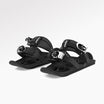
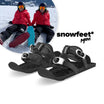
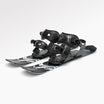
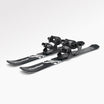

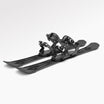

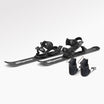







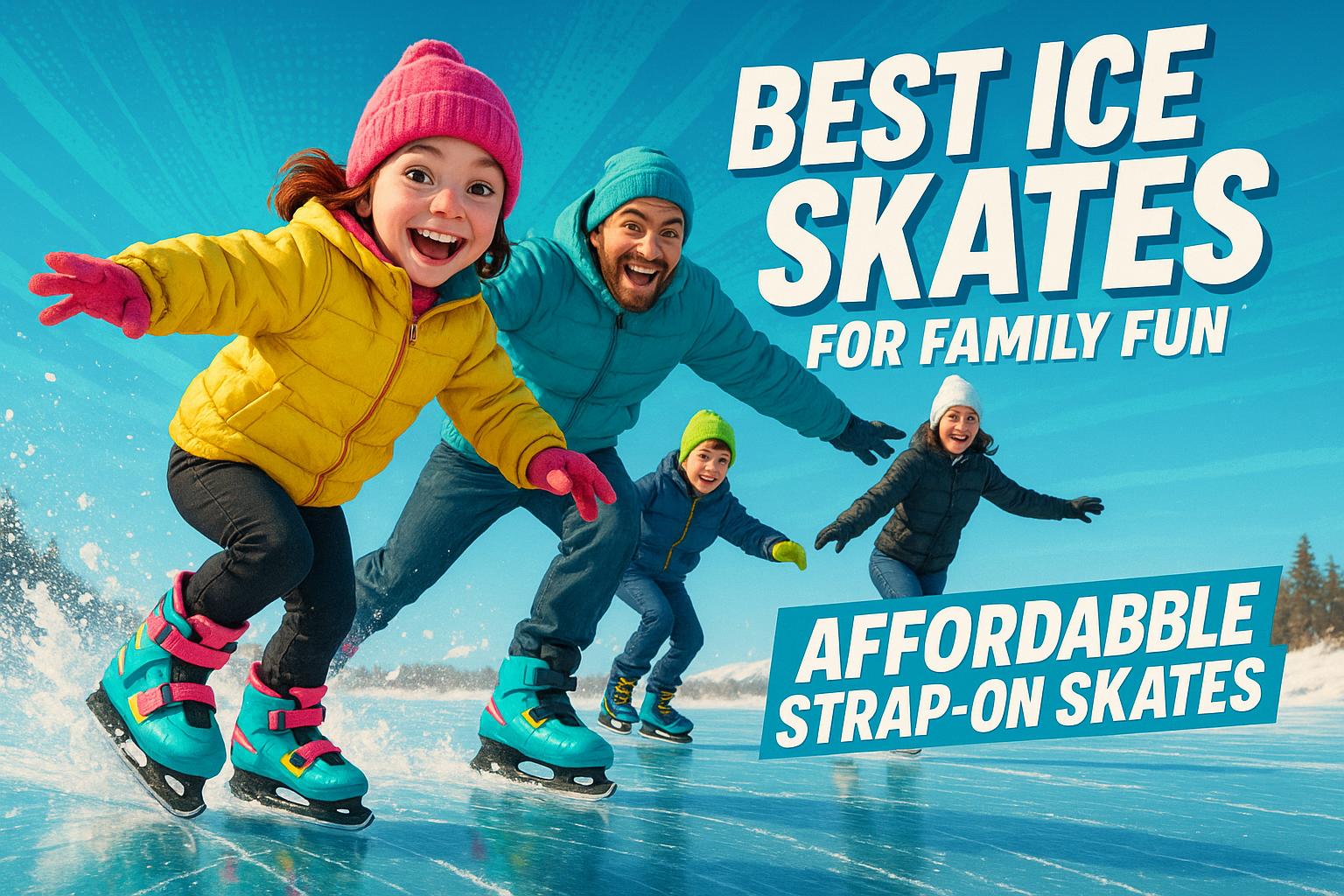
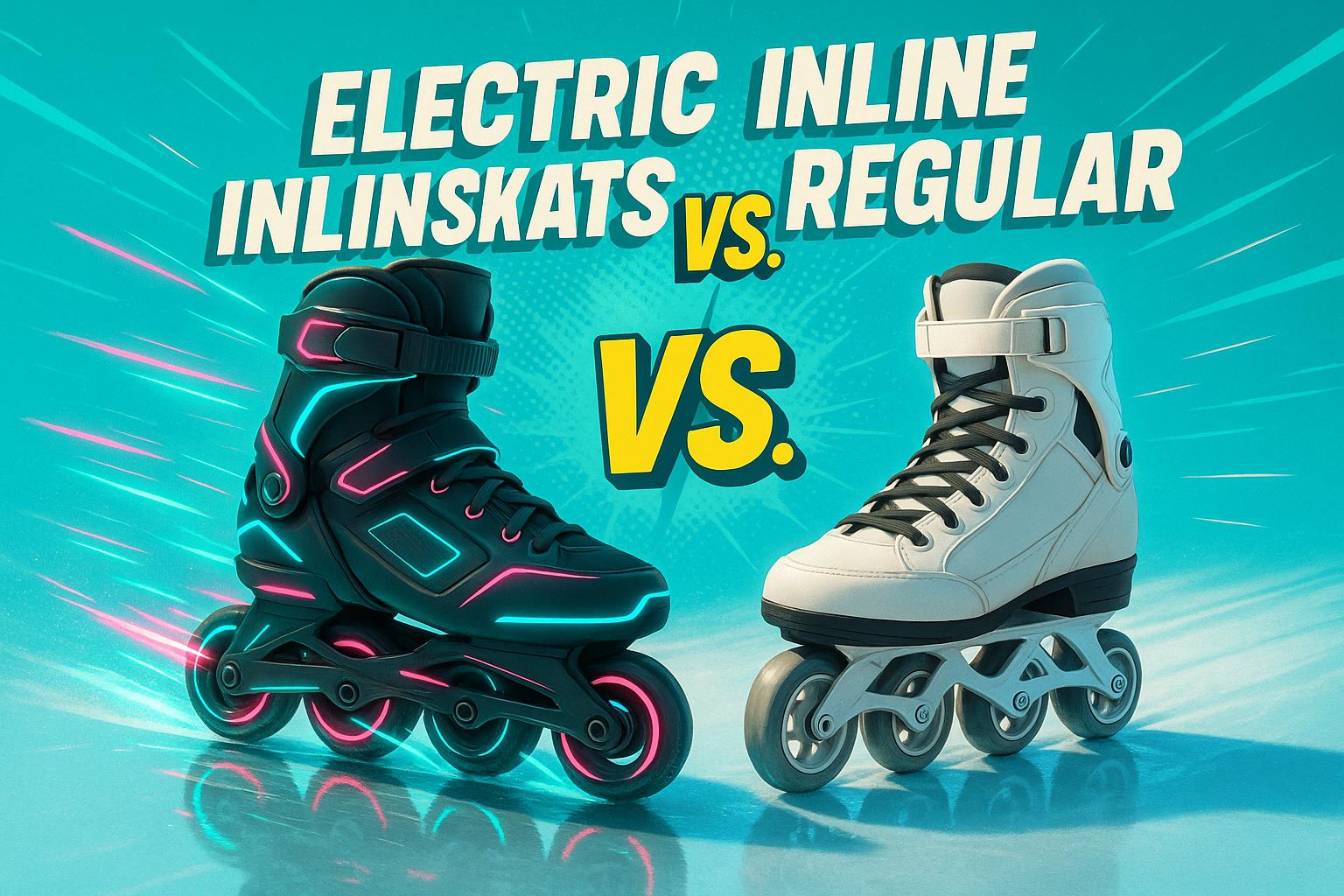




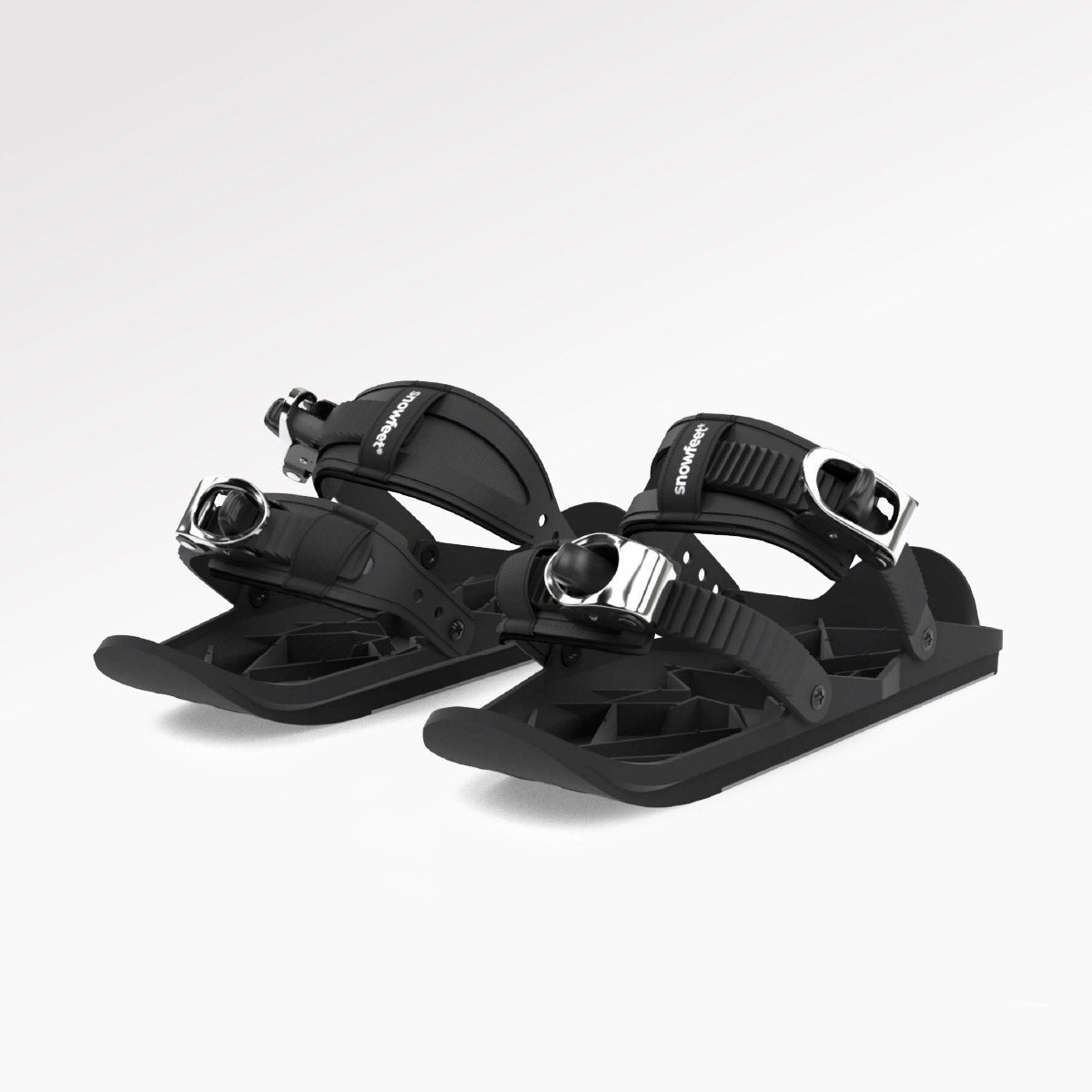
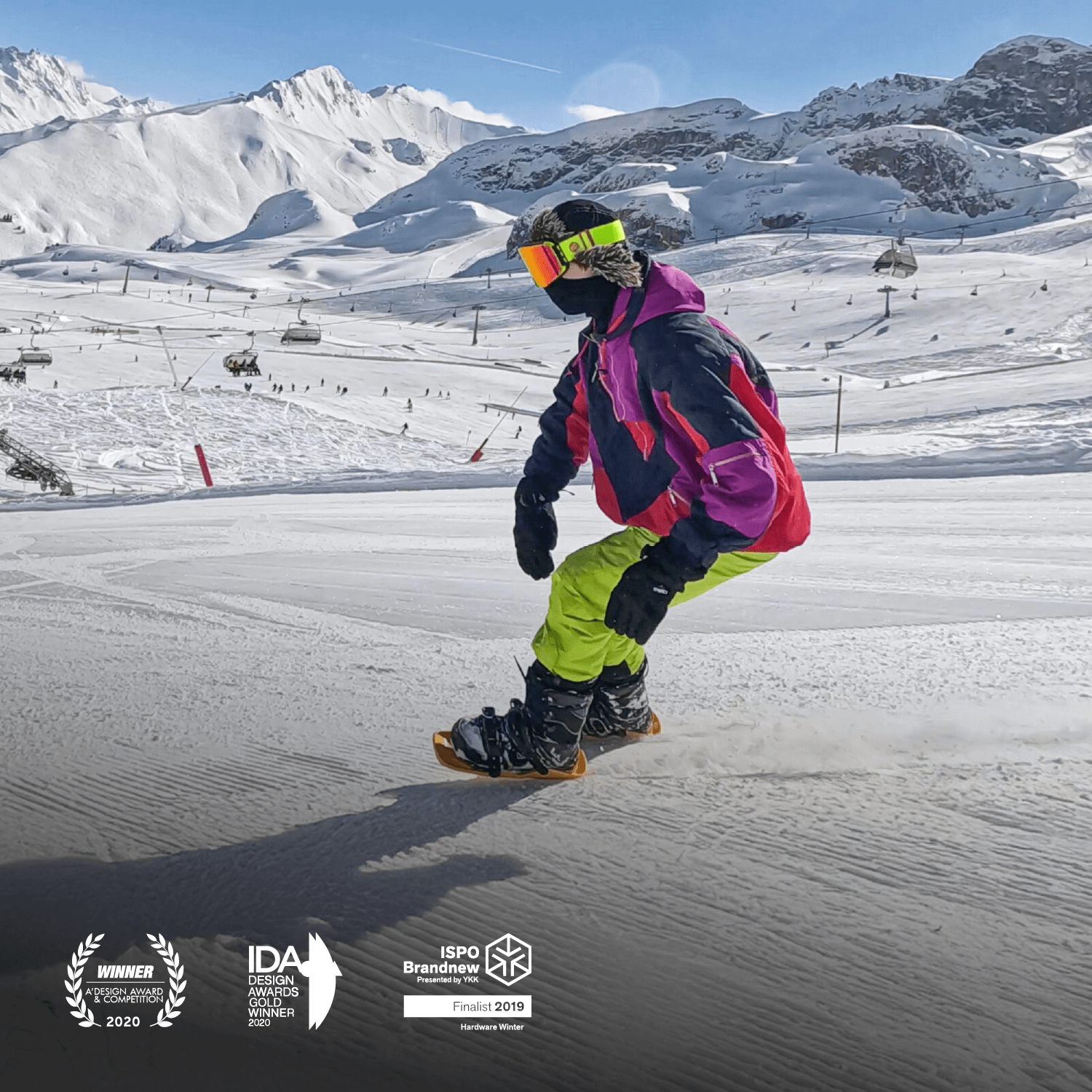
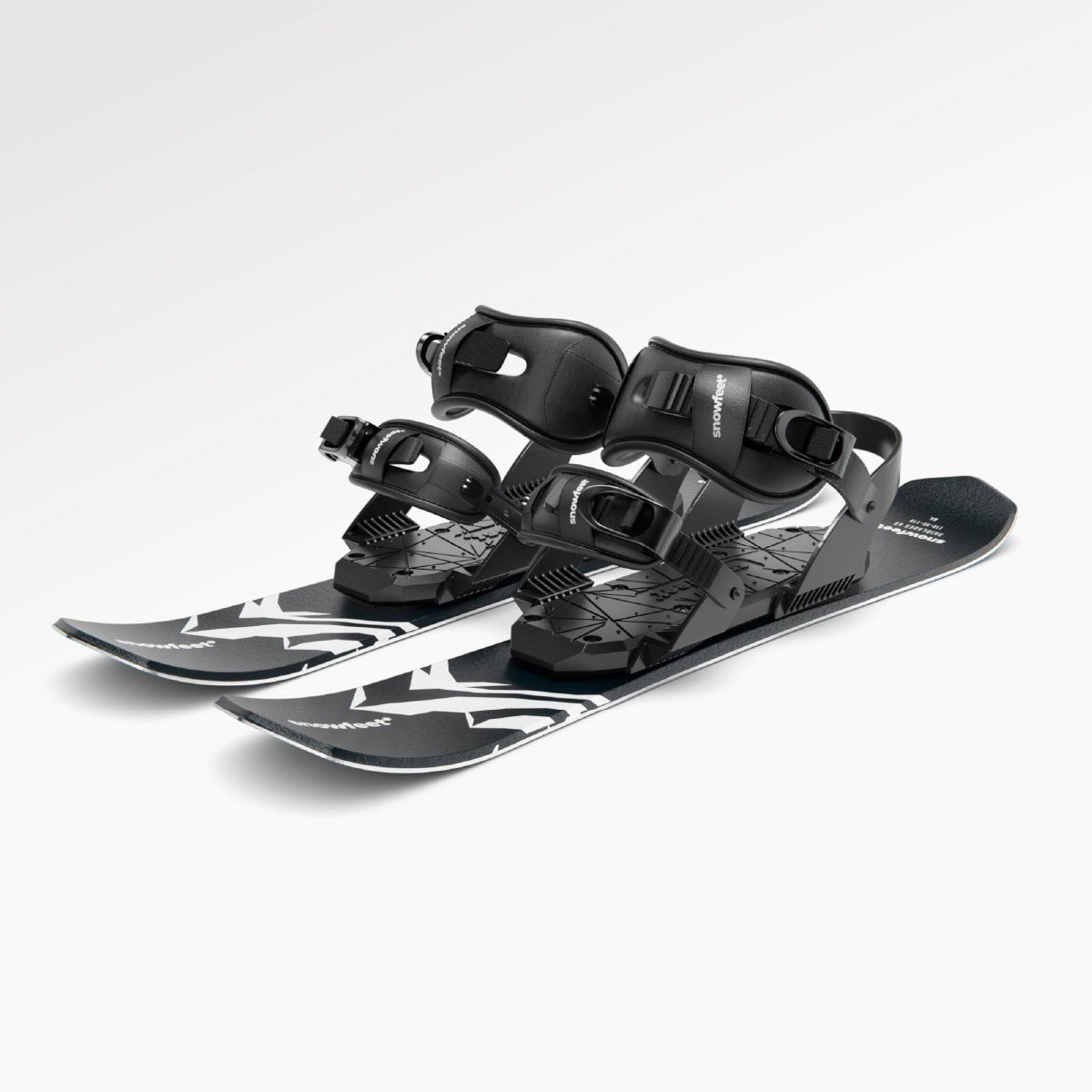

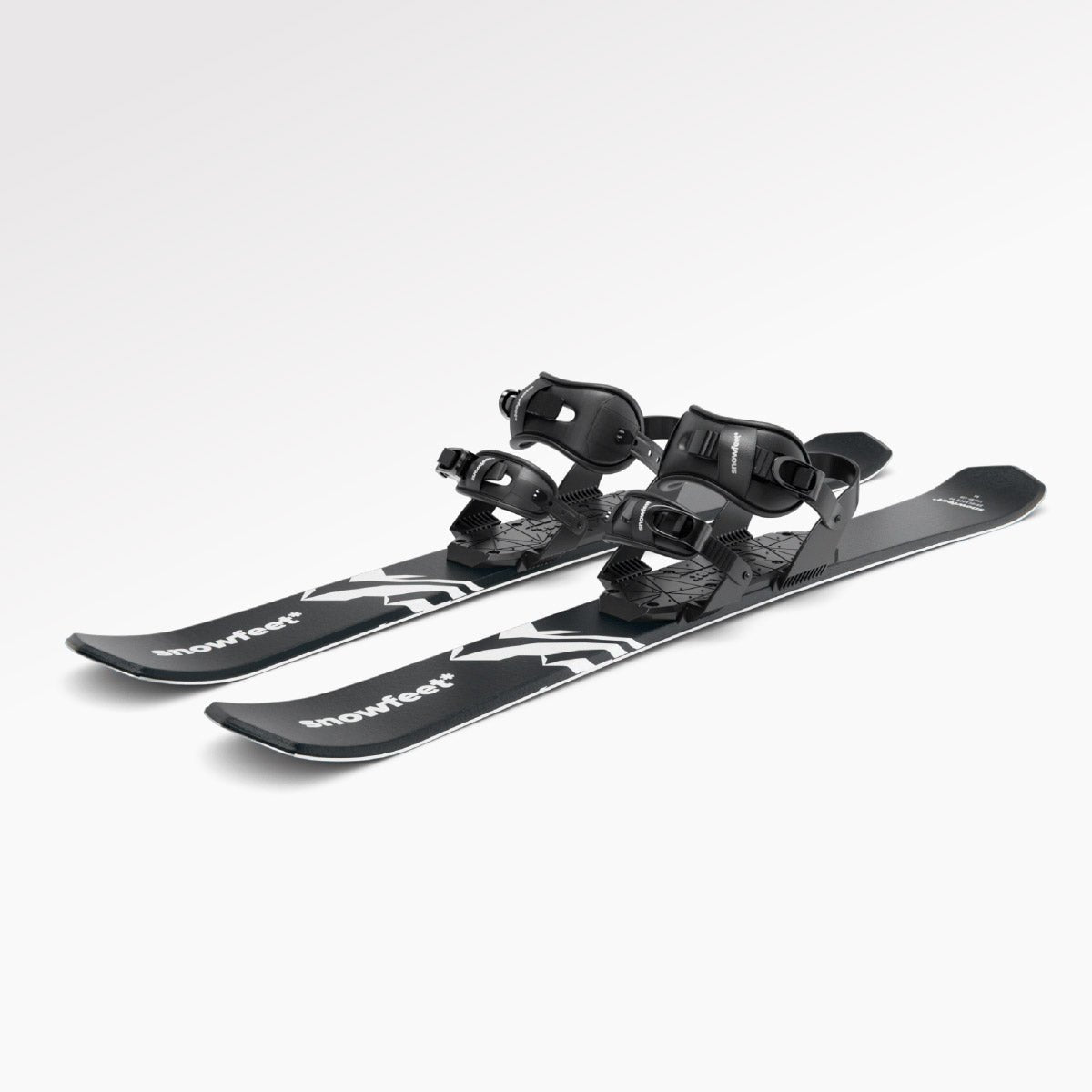

Deja un comentario
Este sitio está protegido por hCaptcha y se aplican la Política de privacidad de hCaptcha y los Términos del servicio.